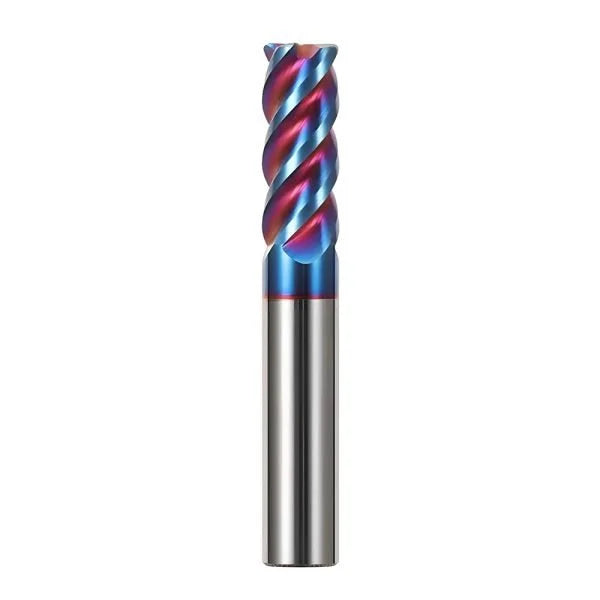
4 consigli per prolungare la durata delle frese in acciaio al tungsteno (carburo):
Condividere
1. Ottimizzare i parametri di taglio
-
Perché funziona: le frese in acciaio al tungsteno sono estremamente resistenti, ma il loro utilizzo in condizioni di taglio improprie può causare un'usura eccessiva. Regolare la velocità di taglio, l'avanzamento e la profondità di taglio in base al materiale da lavorare aiuta a prevenire il surriscaldamento e l'usura prematura dell'utensile.
-
Come fare:
-
Utilizzare le velocità di taglio e di avanzamento consigliate per il materiale che si sta lavorando.
-
Per materiali più duri come l'acciaio inossidabile, ridurre la velocità di taglio e aumentare la velocità di avanzamento per una migliore rimozione dei trucioli e una minore usura dell'utensile.
-
Per i materiali più morbidi, aumentare la velocità di taglio per migliorare l'efficienza, ma monitorare attentamente la temperatura per evitare danni termici alla fresa.
-
2. Utilizzare un refrigerante o una lubrificazione adeguati
-
Perché funziona: refrigeranti e lubrificanti sono essenziali per ridurre l'attrito e il calore durante il processo di taglio. Il calore eccessivo può causare la perdita di durezza e la rapida usura delle frese in acciaio al tungsteno.
-
Come fare:
-
Utilizzare refrigerante per mantenere stabile la temperatura della fresa e del pezzo in lavorazione. Assicurarsi che il refrigerante sia indirizzato direttamente sulla zona di taglio per la massima efficacia.
-
Per la lavorazione a secco, prendere in considerazione l'utilizzo di lubrificanti specificamente progettati per operazioni ad alta temperatura.
-
Utilizzare sempre il tipo corretto di refrigerante in base al materiale da lavorare, poiché alcuni materiali (come l'alluminio) richiedono un tipo di refrigerante diverso rispetto all'acciaio.
-
3. Mantenere la corretta geometria dell'utensile
-
Perché funziona: la geometria della fresa gioca un ruolo fondamentale nelle sue prestazioni. Frese usurate o danneggiate con geometrie errate non funzioneranno in modo ottimale, con conseguente maggiore usura.
-
Come fare:
-
Ispezionare e riaffilare regolarmente la fresa per mantenerne la geometria.
-
Evitare di sovraccaricare la fresa, poiché ciò potrebbe causare scheggiature o rotture dei taglienti.
-
Assicurarsi che la fresa sia bilanciata e allineata correttamente con la macchina per evitare vibrazioni inutili che potrebbero causare usura.
-
4. Pulire e ispezionare regolarmente
-
Perché funziona: i detriti di taglio, come trucioli e polvere, possono accumularsi sulla fresa e comprometterne l'efficienza. Una pulizia regolare garantisce che la fresa funzioni al massimo delle prestazioni, riducendo l'usura inutile.
-
Come fare:
-
Pulire la fresa dopo ogni utilizzo per rimuovere trucioli e residui.
-
Controllare che non vi siano segni di danneggiamento, come crepe o smussature sui bordi taglienti, e sostituirli o riaffilarli se necessario.
-
Per rimuovere i detriti, utilizzare una spazzola morbida o aria compressa, poiché metodi di pulizia aggressivi potrebbero danneggiare la superficie della taglierina.
-
Conclusione:
Ottimizzando i parametri di taglio, utilizzando un refrigerante adeguato, mantenendo la geometria della fresa e pulendola regolarmente, è possibile prolungare significativamente la durata delle frese in acciaio al tungsteno. Questi semplici passaggi contribuiranno a mantenere gli utensili in condizioni ottimali e a migliorare l'efficienza di lavorazione, risparmiando tempo e denaro nel lungo periodo.






